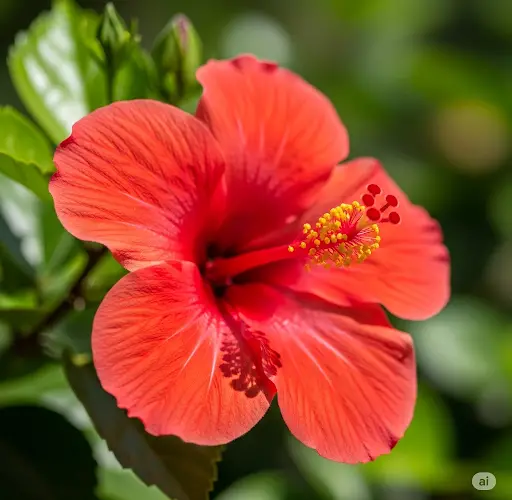Every gardener, whether amateur or experienced, has faced the challenge of plants that just don’t seem to thrive. Some flowers and bushes remain weak, with yellowing leaves, sparse growth, and few—if any—blooms. It can be frustrating to put time and care into plants that don’t respond as hoped.
But what if there was a simple and effective way to revive even the most struggling plants? What if you could feed your flowers so they become greener, healthier, and explode with lush blooms, transforming your garden into a vibrant paradise?
In this article, we’ll share a powerful yet affordable feeding method that breathes new life into any flower or plant, no matter how weak it seems. This proven approach helps your plants regain strength, deepen their green color, and produce abundant, beautiful flowers.
Why Some Plants Struggle and Fail to Bloom
Before discovering how to fix the problem, it’s important to understand why plants sometimes languish.
-
Nutrient Deficiencies: Soil that lacks essential nutrients causes plants to weaken. Nitrogen, phosphorus, potassium, and trace minerals are vital for healthy leaves, roots, and flowers.
-
Poor Soil Structure: Compacted or depleted soil limits root growth and water absorption.
-
Watering Problems: Overwatering can drown roots; underwatering leads to stress. Both can stunt growth.
-
Pests and Diseases: Insects and fungal infections drain plant energy and damage tissues.
-
Environmental Stress: Too much sun, cold drafts, or wind can weaken plants.
When plants do not receive the nutrients and conditions they require, their leaves turn yellow, growth slows, and flowering diminishes or stops altogether.
The Powerful Feeding Solution That Revives Plants Fast
The key to rescuing even the weakest plant lies in targeted feeding. A well-balanced fertilizer or homemade nutrient mix provides what your plants are missing and triggers new growth and flowering.
Here is a simple yet highly effective nutrient feed you can apply under any flower or bush:
Ingredients:
-
Compost tea or diluted organic fertilizer
-
Wood ash (rich in potassium and calcium)
-
Epsom salt (magnesium sulfate)
-
A small amount of molasses or sugar water
How It Works:
-
Compost tea contains beneficial microbes and nutrients that improve soil health and root function.
-
Wood ash supplies potassium, crucial for flower development, and calcium, which strengthens cell walls.
-
Epsom salt provides magnesium, helping plants photosynthesize and build chlorophyll.
-
Molasses or sugar water fuels soil microorganisms that break down nutrients for easier absorption.
How to Apply This Feed for Best Results
-
Mix a diluted solution of compost tea or organic fertilizer with a teaspoon each of wood ash and Epsom salt per gallon of water.
-
Add a small amount (about a tablespoon) of molasses or sugar water to stimulate microbial activity.
-
Water the base of your plants thoroughly with this mixture every 10 to 14 days during the growing season.
-
Be sure the soil is moist before applying to avoid root burn.
This feed provides a balanced boost that reactivates the roots and encourages leaves to green up and flowers to develop.
What You Will Notice After Feeding
After a few applications, you can expect to see:
-
Darker, richer green leaves indicating improved chlorophyll production
-
New leaf growth that looks healthy and vigorous
-
Buds forming rapidly and opening into larger, more plentiful flowers
-
Stronger stems able to support heavy blossoms
-
Overall improved plant vitality, even in bushes or flowers previously considered weak or struggling
Additional Tips to Help Your Plants Thrive
-
Proper watering: Keep soil consistently moist but not soggy. Adjust watering based on plant type and weather.
-
Adequate sunlight: Ensure your plants receive the recommended amount of light for their species.
-
Prune dead or diseased parts: Removing damaged leaves and flowers encourages new growth.
-
Mulch around plants: Mulch retains soil moisture and regulates temperature.
-
Control pests naturally: Use neem oil, insecticidal soaps, or companion planting to reduce pests.
Why This Feeding Method Is So Effective
This combination works because it addresses multiple plant needs simultaneously: nutrition, soil health, and microbial activity. Many commercial fertilizers focus on synthetic chemicals and miss the benefits of a thriving soil ecosystem.
By nurturing the soil microbes and providing essential minerals naturally, your plants receive nutrients in a form they can readily absorb, promoting steady, sustainable growth and flowering.
Who Should Use This Feeding Technique?
This method is ideal for:
-
Gardeners with struggling or yellowing plants looking for natural, affordable solutions
-
Flower enthusiasts aiming for more vibrant, profuse blooms
-
Homeowners wanting healthier bushes that grow quickly and flower abundantly
-
Anyone interested in sustainable, organic gardening practices
Final Thoughts
Don’t accept weak, yellowing plants that fail to bloom. With the right feeding strategy, even the most tired or struggling flower or bush can be revived into a lush, green, flowering beauty.
This affordable, natural feed stimulates roots, enriches the soil, and provides critical nutrients, leading to explosive growth and stunning blossoms. Start feeding your plants this way, and watch as your garden transforms into a vibrant, blooming paradise.



